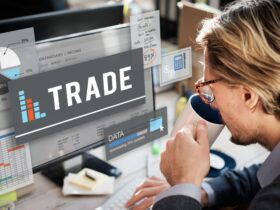Day trading can be an exciting and lucrative way to make money in the stock market. However, it’s also a high-risk strategy that requires discipline, focus, and a solid understanding of the markets. One tool that many day traders use to help them make informed decisions is the day trade call.
In this article, we’ll explain what day trade calls are, how they work, and some important things to keep in mind when using them.
What is a Day Trade Call?
A day trade call is a notification from your broker that you’ve exceeded your day trading buying power. Day trading buying power is the amount of money you have available to trade on a given day, based on the value of your current positions. It’s important to note that this buying power applies only to day trading activities, and is separate from your overall account value.
The Securities and Exchange Commission (SEC) has established rules around day trading buying power, known as the Pattern Day Trader rule. This rule requires traders who execute more than three day trades in a rolling five-day period to maintain a minimum account balance of $25,000. If you have less than $25,000 in your account and execute more than three day trades in a five-day period, you’ll be flagged as a pattern day trader.
When you receive a day trade call, it means that you’ve exceeded your day trading buying power and will need to either deposit more funds into your account or reduce your day trading activities for the remainder of the day. If you don’t meet the call, your broker may liquidate your positions to cover your losses.
How Day Trade Calls Work
Day trade calls are based on the value of your open positions, as well as any cash or margin in your account. When you open a position, your broker will typically require you to put up a certain amount of cash or margin, known as the initial margin requirement. This amount is typically a percentage of the total value of the position, and can vary depending on the security and the broker.
Once you’ve opened a position, your broker will monitor its value throughout the day. If the position increases in value, your day trading buying power will increase accordingly. However, if the position decreases in value, your day trading buying power will decrease as well.
If you execute a day trade and your buying power drops below the initial margin requirement for your open positions, you’ll receive a day trade call. This means that you must deposit additional funds into your account or close some of your positions to bring your buying power back above the initial margin requirement.
Things to Keep in Mind
Day trade calls can be a useful tool for managing risk in day trading. By notifying you when you’ve exceeded your day trading buying power, they can help you avoid taking on too much risk and potentially losing more money than you can afford.
However, it’s important to keep in mind that day trade calls are only one part of a larger risk management strategy. You should also have a solid understanding of the markets, a trading plan that outlines your entry and exit strategies, and a disciplined approach to executing your trades.
Additionally, it’s important to be aware of the Pattern Day Trader rule and the minimum account balance requirements it imposes. If you’re flagged as a pattern day trader and don’t meet the minimum account balance requirements, your broker may place restrictions on your account or even close it altogether.
Finally, it’s important to choose a broker that offers transparent and fair day trade call policies. Some brokers may have higher initial margin requirements or may liquidate your positions without warning, which can lead to unexpected losses.












Leave a Reply